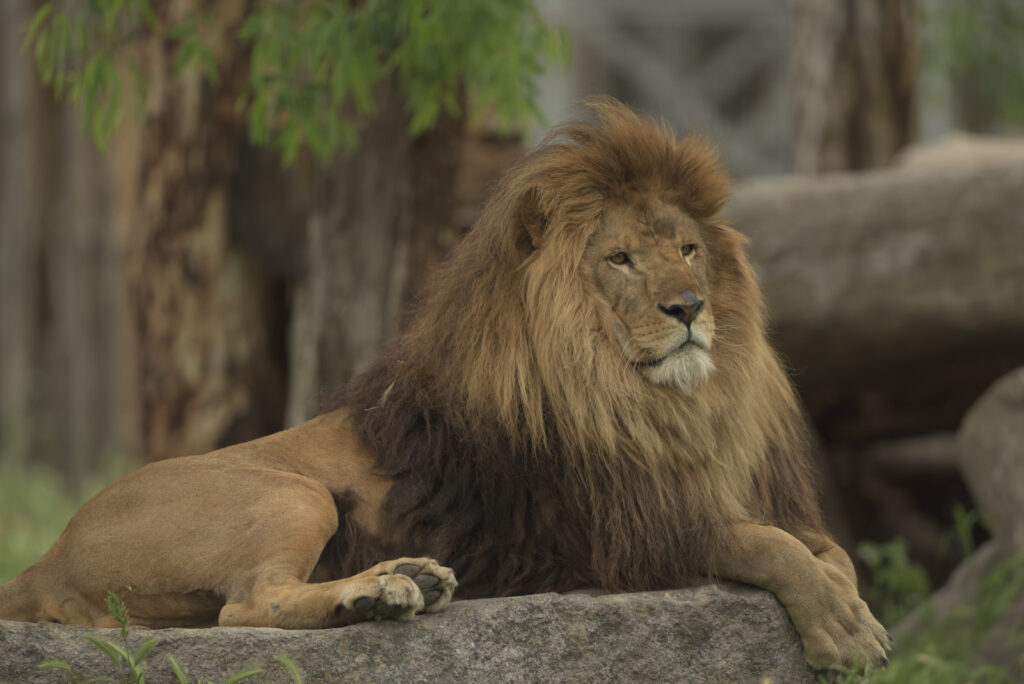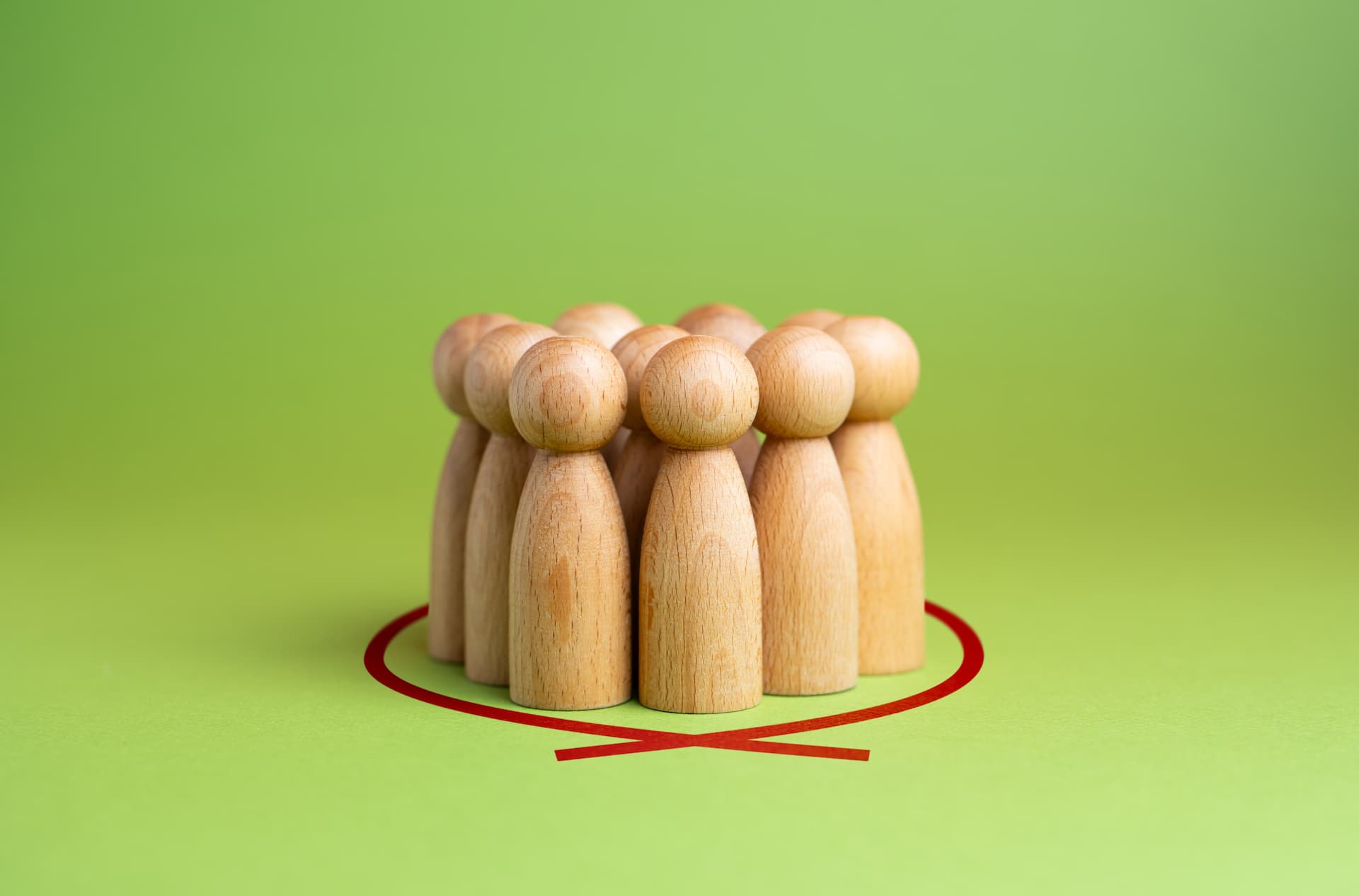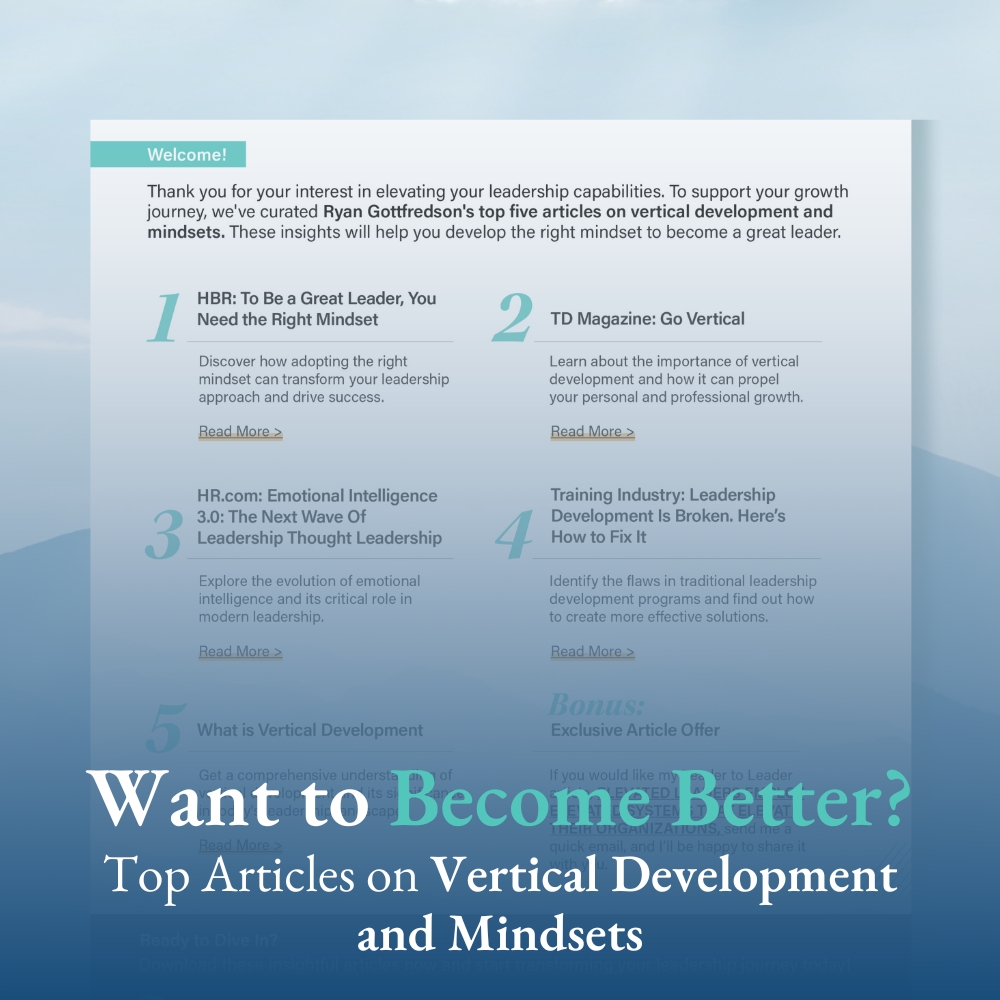We have two side to ourselves:
- Our DOING Side, which represents our talent, knowledge, skills, and abilities
- Our BEING Side, which represents the sophistication of our internal operating system
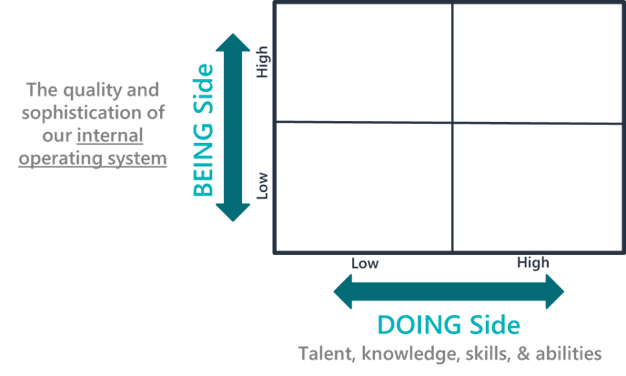
There are some people who are “great” at what they do. They are high on their DOING Side. For example, Bill Cosby was known as a great actor. But, I am not sure there are a lot of people that would consider him to be a great person.
What truly sets apart great people from good people is their altitude on their BEING Side.
The Difference Between Great People and Good People
There are two primary distinguishing characteristics that separate “great” people from “good” people. Both of these characteristics suggest a difference in one’s BEING Side and in the quality of one’s internal operating system.
Characteristic #1: They have an internal operating system that is programmed such that when a tension exists between self-protection and value creation, they lean toward value creation.
Characteristic #2: They possess the ability to make meaning of their world in wise and cognitively/emotionally sophisticated ways. Their thinking and processing are not driven by emotional self-protective reactions. Instead, the possess a wide window of tolerance that allows them to think and process with greater complexity and intentionality, with less self-serving bias.
I want to give you some examples to help you feel into each of these characteristics.
Examples of Characteristic #1: Programmed for Value Creation
Lioness & Lion
I will invite you to watch this video, but warning, it shows a lion capture his dinner.
What we saw in this clip was a lioness who, in that moment, seemed to be more worried about keeping herself safe than about creating value by bringing food home for her family. The lion, on the other hand, was more willing to put himself in harms way to bring food home for his family.
There are a lot of “good” people in this world that “play it safe” in a manner to protect themselves, but it ultimately holds them back from operating in a manner that creates value for others. Rarely do we see these people as being “great.”
Two Musicians
Watch these two short video clips and ask yourself: Who is more self-protective and who is more value creating?
Doesn’t one person seem to be more “great,” while the other was “good” (if not worse)?
Aubrey (from the Pitch Perfect clip) had some fears related to the suggestion that came forward. She seemed afraid of losing power and relevance. She seemed afraid of trying something that was not a “proven formula.” She seemed afraid of taking on a new way of doing things, something she was not an expert in. Her fears made her self-protective.
Benjamin Zander is a great example of someone who seemed to be more self-protective during the first half of career, and became value creating during the second half of his career. This is the power of elevating along our BEING Side. It allows us to move from “good” to “great.”
Microsoft CEOs
From 2000-2014, Microsoft’s CEO was Steve Ballmer. I think most would consider him to be a “good” (or worse) leader.
Since 2014, Microsoft’s CEO has been Satya Nadella. I think most would consider him to be a “great” leader.
Watch these two video clips to get a feel for each of them:
Steve Ballmer revealed his self-protective tendencies when he said, “Give it up for me.” Satya Nadella on the other hand seemed to be all about value creation by using the words, “empathy,” “balance,” and “harmony;” let alone his purpose focused on creating value for others.
Examples of Characteristic #2: Making Meaning in Wise and Cognitively/Emotionally Sophisticated Ways
When we are alter our wiring from being self-protective to being value creating, we elevate how we process and navigate our world. Below are examples of three people who have helped me to think and process in wiser and cognitively/emotionally sophisticated ways.
Brené Brown
In this video clip, Brené Brown shares a personal story about how she went from being self-protective to being more value creating:
Her sharing this story had a massive impact on my life in a similar manner that it did hers. I look back on gaining this insight as being a time where I elevated along my BEING Side.
(Note: She covers this concept better in her book, Rising Strong.)
Simon Sinek
I want to share with you two video clips from Simon Sinek. In each, he is encouraging the audience to make meaning of their world in wiser and cognitively/emotionally sophisticated ways:
Essentially, he is saying: Don’t see failure as something to avoid (this is self-protective). Instead see failure as an opportunity to develop to create greater value in the future (value creating).
He is encouraging leaders to see themselves in a different way. Rather than see themselves as responsible for the results (self-protective mentality), see themselves as responsible for the people who are responsible for the results (value creating mentality).
Adam Grant
In a similar fashion, Adam Grant regularly posts on social media encouraging us to think and process in wiser and cognitively/emotionally ways:
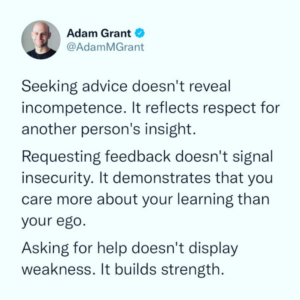
He is saying that some people see seeking advice as a signal of incompetence (self-protection in the moment), whereas seeking feedback leads one to grow into a more capable value creator (value creation in the long run).
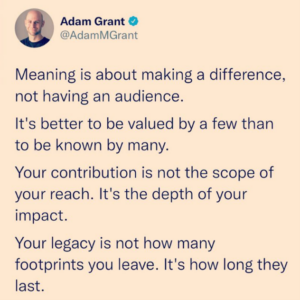
He is saying that we shouldn’t seek meaning by the size of our audience (self-protection in the moment), but by the contribution we are having (value creation in the long run).
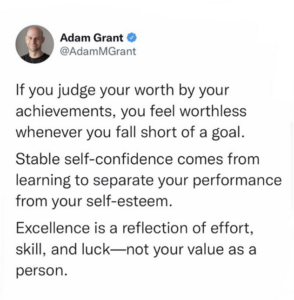
He is saying that we shouldn’t judge our worth by our achievements (self-protection in the moment), but by our inherent value as a person (value creation in the long run).
Good to Great
One key takeaway from this article should be: If we want to become more “great,” we will need to elevate on our BEING Side, and become more wired for value creation as opposed to self-protection.
But, how do we do that?
The only way to do that is by engaging in a form of development called vertical development.
(Here is a video overview: What is Vertical Development?)
Vertical development is a unique form of development that focuses specifically on upgrading our internal operating system such that we become less self-protective and more value creating.
This form of development is different from our typical development efforts (called horizontal development) that focus on improving our knowledge, skills, and abilities. Vertical development, at its core, is about refining and upgrading our body’s nervous system to the degree that we widen our window of tolerance, let go of our self-protective tendencies, and embrace more value creating tendencies.
You saw this with Benjamin Zander above. During the first half of his career, he was focused on himself and his success. But, during the second half of his career, he became focused on awakening the possibility of others. This is a vertical development shift, not a horizontal development shift.
Want to Become Great?
If you want to become great, you are going to need to focus on your vertical development.
If you want to make some efforts on your own, here are some resources:
But, if you want assistance, I do:
If either of these might of interest to you, let’s connect.

